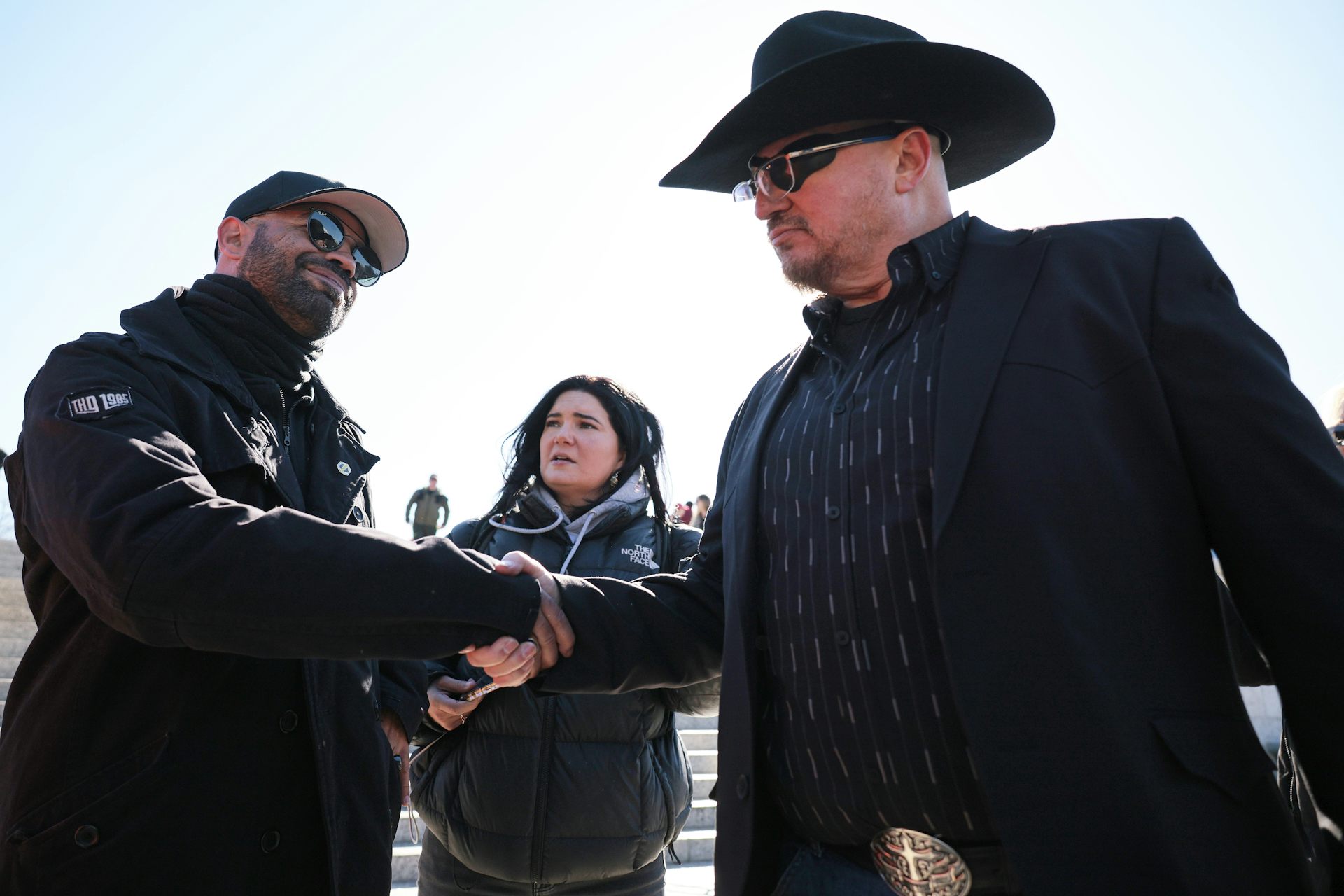First ladies from Martha Washington to Jill Biden have gotten outsized attention for their clothing
On Presidents Day, a women in politics scholar examines the meaning, and sometimes outsized focus, on first ladies’ fashion choices.
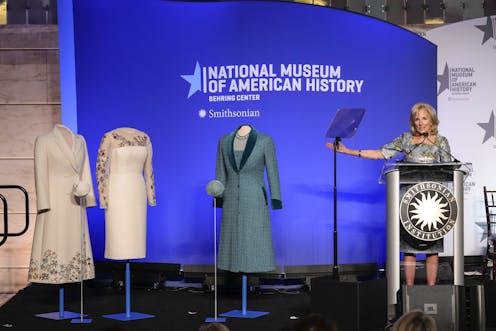
First ladies’ fashion choices tend to attract a lot of attention and often, quite literally, go down in history.
Now, with their new home at the Smithsonian Museum’s popular gallery showcasing first ladies’ fashion, the inauguration outfits of Jill Biden will attract attention for years to come.
Biden wore two outfits by young female designers to mark President Joe Biden’s January 2021 inauguration.
She unveiled the new addition to the exhibit in Washington in January 2023, marking a rare occasion when the first lady has publicly spoken about her clothing’s importance.
First ladies’ fashion choices over the years have often been laced with multiple meanings – representing both their husbands’ administrations and politics, and what was happening in the country at the time. The colorful flourishes on Jill Biden’s white inaugural outfit, for example, paid homage to the United States with embroidered flowers, representing all of the country’s states and territories.
But Jill Biden’s office, as a policy, even before she became first lady, generally has not addressed her clothing, except for particular moments – like when she wore boots that said VOTE ahead of the November 2020 elections, or when she had a sunflower – the national flower of Ukraine – sewn on her dress to show support for the country shortly after the Russian army invaded Ukraine in 2022.
“It’s kind of surprising, I think, how much commentary is made about what I wear or if I put my hair in a scrunchie,” Jill Biden told Vogue in August 2021.
As a researcher of women in politics, from political candidates to first ladies, I think that Presidents Day this year offers a chance to better understand the meaning of first ladies’ fashion – and the potential missteps of focusing too much on their style choices.
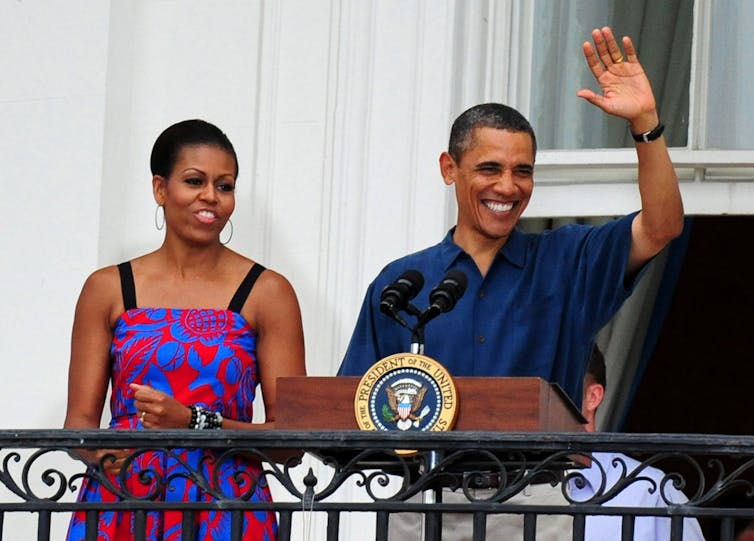
A focus on fashion is not new
First lady Helen Taft was the first to give her clothing to the Smithsonian Museum, helping establish the first ladies’ fashion collection in the early 1900s.
Taft donated the white, silk chiffon gown she wore to President William Howard Taft’s 1909 inauguration.
Helen Taft’s choice set a precedent for future first ladies, who have continued to donate their inaugural clothing to the museum. Seeing first ladies’ clothing throughout history offers a window into their time in the White House and helps museum visitors better understand past fashion influences.
But first ladies tend to also receive outsized attention for their fashion choices – dating back to the early days of Martha Washington, who was known as a woman of high fashion. She insisted on purchasing English laces, silks, jewelry, footwear, bonnets and dozens of kid gloves and silk stockings, specifying repeatedly that they be of the “best” and “fine” variety.
Sending a message
First ladies’ clothing is carefully curated and, at times, comes with subtle messages of diplomacy or can be used to make other political statements.
For example, first lady Jackie Kennedy’s iconic, sleek 1960s era look continues to inspire women around the globe – although she drew criticism for her preference of French designers during her time in the White House. When her husband John F. Kennedy was assassinated, she refused to change out of her bloodstained pink suit to show what the assassin had done to her husband.
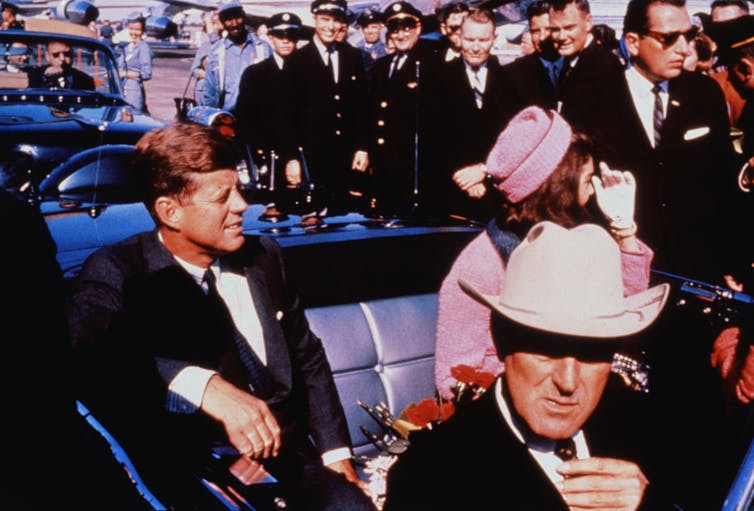
Rosalyn Carter also received public blowback for wearing the same inaugural gown to President Jimmy Carter’s inauguration in 1977 that she first wore to a ball when he was elected governor of Georgia in 1971. Critics complained that she could have given another American designer a boost with a new dress – but the decision to wear something already in her closet spoke to the Carter administration’s ideas of modesty.
And Pat Nixon routinely wore pantsuits during President Richard Nixon’s term from 1969 to 1974 to show support for the growing women’s rights movement.
Melania Trump, too, found herself subject to public criticism when she wore a jacket with the words “I really don’t care, do u?” printed on the back in 2021. Trump’s team said that the coat was “just a jacket.” But the fashion choice still attracted criticism, especially because she wore the coat to visit migrant children detained at a shelter in Texas.
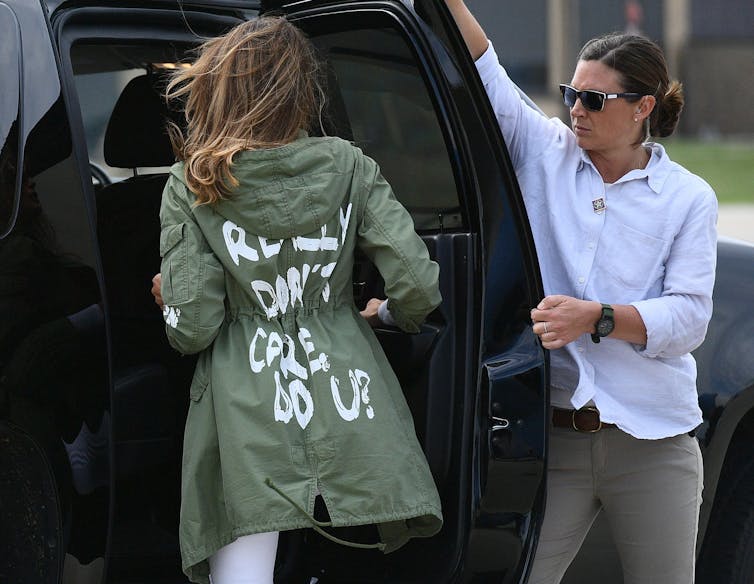
Making history
Men in politics rarely gain media attention for their clothing choices – except for the occasional unusual fashion choice, like when then President Barack Obama wore a taupe suit to a news conference.
Former first lady Michelle Obama – herself known for her chic and often affordable fashion choices – has written about the double standard she and other women in politics faced when it came to the outsized attention their clothing received.
“It seemed that my clothes mattered more to people than anything I had to say,” she wrote in her 2018 book, “Becoming”.
Because of an intense interest in what first ladies wear, it does not seem surprising that one of the most popular exhibits at the National Museum of American History is First Ladies. The exhibit features more than two dozen gowns from the Smithsonian’s almost 100-year old First Ladies collection.
In the past, first ladies typically have donated glittering ball gowns that they wore to the inaugural balls. Jill Biden’s donation included two knee-length dresses with matching coats and, for the first time in history, matching face masks. They are a sobering reminder of the COVID-19 pandemic, which was still raging during the inauguration.
All of the first ladies’ clothing becomes an important part of American history. Each item helps people look back and understand the exact circumstances surrounding each inauguration.
But when public figures like Jill Biden choose not to discuss the nuances of their clothing every time there is interest, I think that they may create more focus on the work of their office, instead of what they are wearing.
Nichola D. Gutgold does not work for, consult, own shares in or receive funding from any company or organization that would benefit from this article, and has disclosed no relevant affiliations beyond their academic appointment.
Read These Next
Has the Fed fixed the economy yet? And other burning economic questions for 2026
As 2026 begins, uncertainty is at the top of everyone’s mind.
The ‘sacred’ pledge that will power the relaunch of far-right militia Oath Keepers
Founder Stewart Rhodes says he will relaunch the group, serving as an important outlet for thousands…
Who thinks Republicans will suffer in the 2026 midterms? Republican members of Congress
The president’s party almost always loses seats in the midterms. More than two dozen Republican House…



